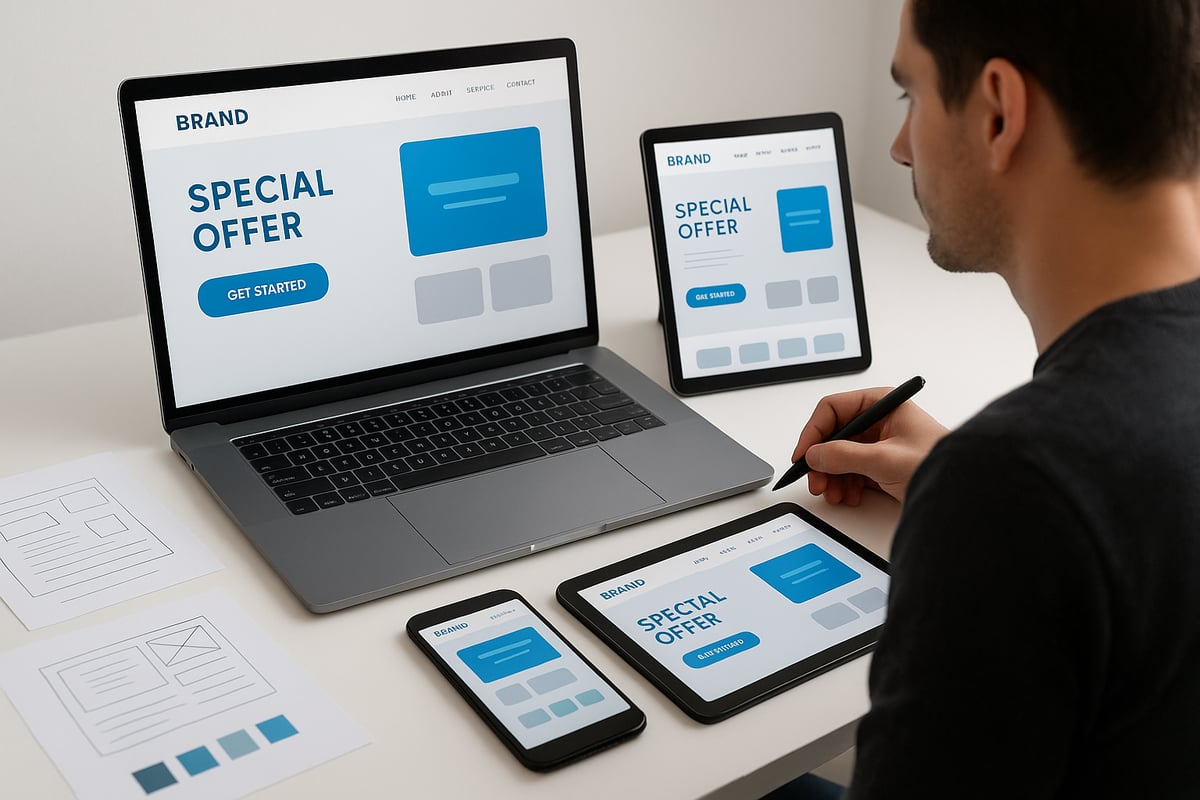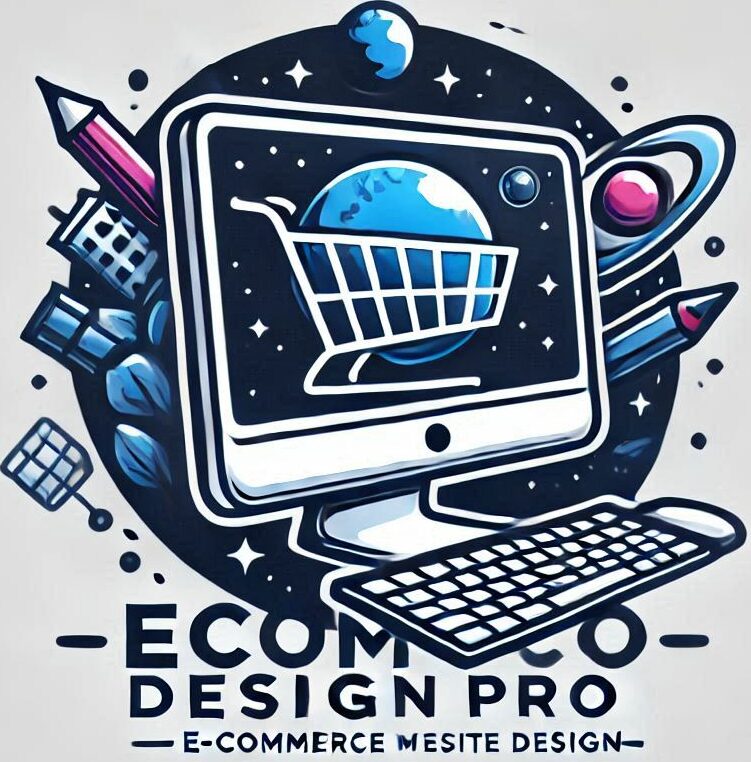In 2025, digital users expect seamless, intuitive journeys at every click and swipe. Graphic design user experience is now the foundation for creating meaningful, engaging interactions. This guide will show how design choices directly influence usability, satisfaction, and business results. You will discover the evolving synergy between design and UX, proven principles for 2025, integration strategies, emerging trends, and real examples. Ready to elevate your digital experiences? Apply these insights to see measurable improvements in user engagement and loyalty.
The Critical Role of Graphic Design in User Experience
In today's digital world, graphic design user experience is inseparable from digital success. As expectations rise, design shapes not only what users see but how they feel and interact. Understanding the evolving relationship between graphic design and UX is essential for any business or designer aiming for impact.

Defining Graphic Design and UX: Where They Intersect
Graphic design user experience begins with understanding the unique roles of each discipline. Graphic design focuses on visual communication, using color, typography, and imagery to convey messages. UX, or user experience, is broader, encompassing the entire journey a user takes with a product, from first impression to final action.
The two intersect when visual hierarchy, layout, and branding directly influence perception and usability. For instance, a well-designed logo sets the emotional tone for a digital platform, while clear layouts make navigation intuitive. As highlighted on Quora, “Good graphic design HAS TO have User Experience at its core.” For practical approaches, see these graphic design techniques for UX.
Why Graphic Design is Foundational to UX in 2025
In 2025, graphic design user experience is defined by purpose, not just appearance. The shift is clear: visuals must support user goals, not distract from them. Effective design guides users through navigation, ensures accessibility, and fosters emotional connection.
Design decisions impact how users find information, whether they trust a brand, and how easily they complete tasks. While art can exist for its own sake, digital design is always in service to usability. Competitors note that “UX focuses on usability, information architecture, visual hierarchy, accessibility,” making design indispensable to great experiences.
The Business Case: Design-Driven UX and ROI
Investing in graphic design user experience pays measurable dividends. Companies that prioritize design see higher conversion rates, stronger customer loyalty, and greater retention. In e-commerce, SaaS, and mobile apps, thoughtful design can be the difference between a completed sale and an abandoned cart.
A/B testing is a powerful tool here. By tweaking design elements like button color or layout, businesses have seen significant improvements in user retention. Even small changes, when backed by user data, can drive results that directly impact the bottom line.
User Psychology: How Design Choices Shape Experience
The psychology behind graphic design user experience is profound. Visual cues, such as color and imagery, trigger emotional responses that influence user behavior. For example, blue tones can evoke trust, while red may signal urgency.
Typography and spacing also play critical roles in readability and comprehension. A cluttered interface can overwhelm users and erode trust, while a clean, organized layout encourages engagement. The right design choices make users feel confident and in control, fostering positive interactions.
The Evolution of UX: From Aesthetics to Strategy
Graphic design user experience has evolved from a focus on surface-level beauty to a core element of digital strategy. Today, designers are expected to understand user research, data analysis, and accessibility standards.
This shift has created demand for professionals who blend creative vision with UX expertise. Design decisions now rely on research and testing, ensuring that every visual element serves a strategic purpose. The modern approach is research-driven and data-backed, reflecting the critical role design plays in shaping digital experiences.
Core Graphic Design Principles for Exceptional UX in 2025
Creating an exceptional graphic design user experience in 2025 requires a deep understanding of key design principles. These principles shape how users perceive, navigate, and interact with digital products. By mastering them, designers and businesses can ensure every visual element contributes to a seamless, engaging user journey.

Visual Hierarchy and Information Architecture
Visual hierarchy is the backbone of effective graphic design user experience. It guides where users look first, how they process information, and what actions they take next. Designers use size, color, and placement to draw attention to key elements, such as headlines, calls to action, and navigation menus.
A well-structured information architecture ensures users can find what they need quickly. Clear navigation and logical content structure reduce frustration and help users complete tasks efficiently. For example, e-commerce sites with intuitive menu designs and prominent product categories see higher engagement and fewer drop-offs.
- Use larger fonts for important headings
- Highlight calls to action with contrasting colors
- Group related content together for easy scanning
Effective use of visual hierarchy makes the graphic design user experience intuitive and satisfying.
Consistency and Brand Cohesion
Consistency is a cornerstone of memorable graphic design user experience. Using the same colors, fonts, and iconography across all platforms builds familiarity and trust. Brand guidelines serve as a roadmap, ensuring every touchpoint feels cohesive, whether on a website, mobile app, or marketing material.
Apple’s design system is a benchmark in this area. Their strict adherence to color palettes, typography, and spacing creates a seamless experience for users switching between devices. Consistency not only reinforces brand identity, it also reduces cognitive load, making navigation effortless.
Maintaining brand cohesion across every channel helps users recognize and trust a product instantly. This reliability is essential for building long-term loyalty.
Accessibility and Inclusivity in Design
Accessibility is central to a successful graphic design user experience. Digital products must comply with ADA and WCAG standards, making them usable for everyone, including people with disabilities. Key considerations include color contrast, sufficient font sizes, and alternative text for images.
For example, designing with high-contrast color schemes benefits users with low vision, while clear typefaces improve readability for all. Including descriptive alt text ensures screen reader compatibility. Designing for color blindness by avoiding problematic color pairings is also vital.
For a comprehensive guide on making your designs more accessible, see the Inclusive design principles for accessibility.
Prioritizing accessibility ensures that the graphic design user experience welcomes a broader, more diverse audience.
Microinteractions and Feedback
Microinteractions are subtle design elements that provide instant feedback to users. These include animations, hover states, loading spinners, and notifications. When implemented thoughtfully, microinteractions guide users, clarify actions, and create moments of delight.
For example, a button that changes color when clicked reassures users their action was registered. Progress indicators in checkout flows reduce uncertainty and keep users informed. These details may seem minor, but they significantly improve the overall graphic design user experience.
- Use animated icons for feedback
- Highlight form errors in real time
- Add transitions to smooth navigation
Effective microinteractions make digital experiences feel responsive and polished.
Minimalism vs. Expressiveness: Balancing Clarity and Brand Personality
Striking the right balance between minimalism and expressiveness is essential for a strong graphic design user experience. Minimalist design, with clean layouts and ample whitespace, prioritizes clarity and speed. It helps users focus on content without distractions.
However, expressive elements such as bold visuals, custom illustrations, or vibrant colors can convey brand personality and make an experience memorable. The key is to use these elements purposefully, without sacrificing usability.
Landing pages often blend minimalism with expressive branding. Plenty of whitespace ensures readability, while a bold hero image or unique color palette captures attention. This approach keeps the graphic design user experience clear yet distinctive.
Mobile-First and Responsive Design
In 2025, mobile-first thinking is non-negotiable for graphic design user experience. With users accessing content on various devices, designs must adapt seamlessly to different screen sizes and connectivity conditions. Responsive layouts and scalable graphics ensure content remains accessible and visually appealing everywhere.
Designers prioritize touch-friendly buttons, legible fonts, and flexible grids. For instance, online stores use responsive product galleries that showcase items beautifully on both smartphones and desktops. This adaptability enhances engagement and reduces bounce rates.
A mobile-first approach guarantees that the graphic design user experience meets users where they are, delivering consistent quality across all platforms.
Data-Driven Design Decisions
The most effective graphic design user experience is informed by real user data. Analytics and user testing reveal what works and what needs improvement. Designers use A/B testing to compare layouts, color schemes, and imagery, optimizing for conversion and satisfaction.
For example, a homepage redesign based on user behavior data might boost engagement and lower bounce rates. By continuously measuring and iterating, teams ensure that every design decision is purposeful and impactful.
- Track click-through rates on key buttons
- Analyze heatmaps to identify navigation issues
- Test alternative color palettes for better readability
Embracing data-driven processes keeps the graphic design user experience aligned with user needs and business goals.
Step-by-Step: How to Integrate Graphic Design and UX for Maximum Impact
Integrating graphic design user experience is a structured process that transforms digital products from ordinary to exceptional. By following a clear, step-by-step approach, teams can create experiences that are visually compelling, intuitive, and drive measurable results. Below, we break down each critical phase to help you maximize the synergy between design and UX.

Step 1: Conduct User Research and Define Personas
The foundation of effective graphic design user experience is understanding your audience. Begin by conducting interviews, surveys, and usability tests to uncover user needs, motivations, and pain points.
Develop detailed personas that represent key user segments. These personas guide design decisions and ensure the final product resonates with real people.
List for research methods:
- User interviews
- Online surveys
- Analytics review
By grounding your process in user insights, you lay the groundwork for a design that is both beautiful and functional.
Step 2: Map User Journeys and Identify Key Touchpoints
Next, visualize the complete experience users have with your product across all devices and channels. Mapping user journeys helps pinpoint critical touchpoints where graphic design user experience can remove friction or create delight.
Identify moments that matter, such as sign-up, checkout, or onboarding. For e-commerce, consider reviewing E-commerce UX design strategies to optimize these touchpoints.
List for journey mapping:
- Outline start-to-finish user flow
- Highlight pain points
- Note opportunities for design-led improvements
A well-mapped journey ensures every design choice aligns with user needs.
Step 3: Develop Wireframes and Prototypes
Start translating ideas into tangible layouts with wireframes. Low-fidelity sketches help you focus on structure and flow before adding visual polish.
Move to interactive prototypes using tools like Figma or Adobe XD. This step allows for early testing and feedback, reducing costly changes later.
Table: Wireframe vs. Prototype
| Stage | Purpose | Tools |
|---|---|---|
| Wireframe | Structure, layout | Pen, Sketch |
| Prototype | Interaction, usability | Figma, Adobe XD |
Prototyping is crucial for refining graphic design user experience before development begins.
Step 4: Apply Visual Design Principles
With functional layouts in place, layer in color, typography, imagery, and branding elements. Consistency is key, so establish a design system for scalable UI components.
Focus on accessibility and maintain visual hierarchy to guide users smoothly. Use contrast, whitespace, and familiar iconography to enhance usability.
Checklist for visual design:
- Use brand colors and fonts consistently
- Optimize for readability and contrast
- Include accessible elements
Applying these principles strengthens the impact of graphic design user experience.
Step 5: Test, Iterate, and Optimize
Testing is essential for continuous improvement. Conduct usability tests with real users to gather actionable feedback on your designs.
Analyze performance data, such as click rates and conversion metrics. Use A/B testing to compare alternative layouts or elements.
Iteration process:
- Gather feedback
- Make data-driven adjustments
- Retest and validate changes
Through this cycle, you refine graphic design user experience to meet evolving user expectations.
Step 6: Collaborate Across Teams
Collaboration ensures alignment between design, development, and business goals. Hold regular meetings and use shared documentation to streamline communication.
Leverage cross-functional sprints where designers, developers, and stakeholders co-create solutions. This approach uncovers blind spots and accelerates problem-solving.
Collaboration tools:
- Shared design systems
- Project management platforms
- Regular feedback sessions
Effective teamwork is the backbone of successful graphic design user experience integration.
Step 7: Launch and Monitor
After launch, monitor user metrics to assess the effectiveness of your design changes. Set up ongoing feedback loops, such as surveys or Net Promoter Score (NPS) tracking.
Track KPIs like retention, engagement, and satisfaction. Continuous monitoring allows you to spot new opportunities for improvement.
Monitoring checklist:
- Set clear success metrics
- Collect real user feedback
- Adjust based on data insights
By staying vigilant post-launch, you ensure your graphic design user experience remains relevant and impactful.
Emerging Trends in Graphic Design and UX for 2025
As digital landscapes evolve, the intersection of graphic design user experience is driving innovation. In 2025, several emerging trends are set to redefine how users interact with digital products. These trends are not just about aesthetics, but about creating meaningful, accessible, and personalized experiences. Let’s explore the six most impactful shifts shaping the future of graphic design user experience.

AI-Powered Personalization
Artificial intelligence now plays a central role in graphic design user experience. AI algorithms analyze user data to tailor visuals, layouts, and content, ensuring each interaction feels unique. Dynamic interfaces adjust in real time, adapting to user preferences, device types, and even behavioral patterns.
For example, e-commerce sites can serve personalized homepages based on browsing history or past purchases. This approach not only increases engagement but also builds customer loyalty. In 2025, designers who leverage AI can create adaptive experiences that feel intuitive and relevant, setting a new standard for graphic design user experience.
Motion Design and Micro-Animations
Motion design and micro-animations are elevating graphic design user experience by providing instant feedback and guiding user attention. Subtle animated transitions, hover effects, and progress indicators enhance perceived performance and make interfaces feel more responsive.
Micro-animations can clarify navigation and reduce cognitive load, especially on mobile devices. As highlighted in Micro-animations and user engagement, well-crafted animations can boost user satisfaction and retention significantly. Expect motion to remain a key ingredient in building delightful, intuitive experiences.
Immersive and Multisensory Experiences
In 2025, graphic design user experience extends beyond the screen. Augmented reality (AR), virtual reality (VR), and haptic feedback are transforming how users engage with digital content. AR product previews, interactive 3D models, and tactile responses on wearables create multisensory experiences that drive deeper engagement.
Designers must consider spatial layouts, lighting, and interactive cues to ensure these experiences are both intuitive and accessible. As multisensory technology matures, expect immersive storytelling and product visualization to become mainstream in graphic design user experience.
Sustainable and Ethical Design
Sustainability is now a core value in graphic design user experience. Eco-friendly color palettes, dark mode, and optimized assets help reduce energy consumption across digital platforms. Ethical design practices prioritize user well-being, avoiding manipulative patterns and ensuring honest communication.
For instance, minimalist interfaces not only speed up load times but also lower carbon footprints. Brands that adopt sustainable and ethical principles in their graphic design user experience can enhance reputation and appeal to conscious consumers.
Voice and Gesture Interfaces
The rise of voice and gesture interfaces is transforming graphic design user experience, making technology more accessible and hands-free. Voice commands, chatbots, and gesture-based controls allow users to interact naturally, especially on smart devices and wearables.
Designers must create clear visual cues, intuitive feedback, and inclusive experiences for users of all abilities. Voice search integration in retail apps, for example, simplifies navigation and enhances accessibility, reflecting the broader trend towards frictionless interaction.
Inclusive Design for Global Audiences
Globalization demands that graphic design user experience works seamlessly across cultures, languages, and abilities. Inclusive design involves adapting visuals, content, and navigation for diverse audiences. Localization ensures that imagery, color choices, and layouts are culturally appropriate and resonate worldwide.
Multilingual websites with region-specific content and accessible UI elements are essential. Prioritizing inclusivity not only expands reach but also demonstrates a brand’s commitment to every user.
Real-World Examples: Graphic Design Transforming UX
Graphic design user experience is not just a theory, it is the engine behind many of today’s most successful digital products. Let us explore how strong design decisions have led to measurable improvements in real-world projects across industries.
E-commerce: Streamlining Checkout for Higher Conversions
In e-commerce, even minor changes in graphic design user experience can dramatically impact sales. A leading online retailer revamped their checkout flow by simplifying form fields, increasing whitespace, and using bold progress indicators.
Key improvements included:
- Clear visual hierarchy guiding users step by step
- Consistent branding throughout the process
- Prominent call-to-action buttons with accessible color contrast
After implementing these changes, the brand saw a 35% reduction in cart abandonment. This case demonstrates how thoughtful graphic design user experience directly boosts conversion rates and customer satisfaction.
SaaS Platforms: Dashboard Clarity and Data Visualization
For SaaS products, dashboard clarity is vital. One SaaS company overhauled its analytics dashboard using a clean layout, intuitive iconography, and improved color coding.
Before the redesign, users reported confusion and information overload. After focusing on graphic design user experience, the new dashboard offered:
- Clear data groupings with logical navigation
- Readable typography and sufficient spacing
- Visual cues for actionable insights
Users found tasks easier and faster to complete, leading to higher engagement and more positive feedback. This example highlights how graphic design user experience can turn complex data into actionable information.
Mobile Apps: Enhancing Onboarding and Engagement
Mobile apps thrive when onboarding is seamless. A popular fitness app reimagined its onboarding journey by integrating animated illustrations, personalized greetings, and interactive microinteractions.
The graphic design user experience here focused on:
- Visual storytelling to reduce user anxiety
- Smooth transitions and timely feedback
- Consistent use of brand colors and icons
After launch, the app’s day-7 retention rate increased by 50%. The improved onboarding experience encouraged users to form habits and return regularly.
Nonprofit and Accessibility: Designing for All
Nonprofits benefit from inclusive design. A major charity overhauled its donation portal, prioritizing accessibility. The team used high-contrast colors, large readable fonts, and simple navigation to ensure everyone could participate.
For inspiration, explore how Inclusive and Accessible Design shapes modern user experiences for all audiences.
Results included:
- Broader audience reach, including users with disabilities
- Increased online donations
- Positive feedback from diverse user groups
This example proves that graphic design user experience should always consider accessibility as a core principle.
Brand Revamps: Aligning Visual Identity and User Experience
A financial services company recently refreshed its brand with a new logo, updated color palette, and modular UI components. The goal was to align visual identity with a streamlined graphic design user experience.
Key outcomes:
- Improved brand perception and trust
- 23% higher revenue after rollout, according to a Lucidpress study
- Users reported feeling more confident navigating the site
This initiative shows that a cohesive graphic design user experience can elevate both business impact and customer trust.
Common Pitfalls and Lessons Learned
Despite these successes, teams sometimes over-design or overlook mobile and accessibility needs. Common pitfalls include cluttered layouts, inconsistent branding, and ignoring user feedback.
Lessons learned:
- Balance creativity with clarity
- Test designs with real users early and often
- Prioritize accessibility in every project
By focusing on data, iteration, and user needs, any organization can avoid these traps and achieve extraordinary results with graphic design user experience.
The Future of Graphic Design and UX: Skills and Tools for 2025
Navigating the future of graphic design user experience requires a blend of technical prowess, strategic thinking, and adaptability. As the industry evolves, designers and businesses must embrace new skills, tools, and mindsets to remain competitive and deliver exceptional digital experiences.
Essential Skills for Designers
Success in graphic design user experience now demands more than visual flair. Designers must excel in UX research, prototyping, and usability testing. Mastering leading tools like Figma, Sketch, and Adobe Creative Cloud is crucial for crafting responsive, intuitive interfaces.
Equally important is an understanding of front-end development basics. This empowers designers to collaborate seamlessly with developers and translate creative concepts into functional products. Analytical thinking, empathy for users, and a commitment to accessibility round out the modern designer’s toolkit.
- UX research and personas
- Interactive prototyping
- Accessibility standards
- Visual design mastery
Staying current with emerging trends, such as 3D and motion design, also ensures continued relevance.
Building a Future-Ready Design Portfolio
A portfolio in 2025 is more than a showcase of visuals. It must demonstrate your impact on graphic design user experience through detailed case studies, before-and-after comparisons, and tangible results. Prospective employers and clients want to see problem-solving, not just pretty screens.
Highlight projects that improved accessibility, inclusivity, and usability. Include metrics such as conversion rates, user retention, or reduced support tickets. Document your design process, showing how you use data and user feedback to drive decisions.
- Case studies with outcomes
- Accessibility and inclusive design examples
- Data-driven results
This approach sets your work apart and proves your ability to elevate user experience.
Collaboration and Communication
Graphic design user experience is a team sport. Designers must communicate their ideas clearly to developers, product managers, and stakeholders. Strong collaboration leads to cohesive solutions and avoids costly misunderstandings.
Effective teams use shared tools, such as design systems and documentation platforms. Regular workshops and design reviews foster alignment and spark innovation. Presenting design decisions with user insights and data builds trust and consensus.
- Cross-functional teamwork
- Shared design systems
- Stakeholder workshops
Prioritize transparency and open feedback for the best results.
Lifelong Learning: Staying Ahead of Trends
The landscape of graphic design user experience shifts rapidly. Lifelong learning is essential for staying ahead. Follow industry leaders, read design publications, and participate in conferences to keep your skills sharp.
Online courses focused on AI, accessibility, and emerging technologies expand your expertise. Engaging with design communities provides inspiration and networking opportunities. Exploring new areas, such as Immersive 3D and Motion Design, helps you anticipate where the industry is headed.
- Subscribe to design newsletters
- Attend virtual workshops
- Join professional forums
Continuous improvement sets you apart in a competitive market.
Choosing the Right Tools and Platforms
Selecting the right tools is pivotal for graphic design user experience. Modern designers rely on robust prototyping platforms, analytics integrations, and collaboration suites. AI-powered solutions are revolutionizing workflows, automating repetitive tasks, and enhancing creativity. Explore AI-Powered Design Tools to boost efficiency and innovation.
Integrate analytics and feedback tools, such as Hotjar or Google Analytics, into your workflow. This enables data-driven decisions and ongoing refinement. Scalable design systems ensure consistency across platforms and devices.
- AI-enhanced creativity platforms
- Analytics and user testing tools
- Scalable design systems
Adopting the right technology empowers your team to deliver exceptional UX.
Career Opportunities and Industry Outlook
The demand for graphic design user experience professionals continues to rise. Industries from e-commerce to healthcare seek designers with UX expertise. Remote work and global collaboration are now standard, offering broader career prospects.
According to the U.S. Bureau of Labor Statistics, UX design jobs are projected to grow by 8% by 2030. Employers value designers who can demonstrate measurable results and adapt to changing technologies. Building a versatile skill set opens doors across industries.
- Growing job market
- Remote and hybrid opportunities
- Multidisciplinary roles
Staying adaptable ensures sustained career growth.
Action Plan: Next Steps for Designers and Businesses
To advance in graphic design user experience, start with a UX audit of your digital assets. Identify areas for improvement in navigation, accessibility, and visual consistency. Test and refine one key user flow, such as onboarding or checkout, for immediate impact.
Invest in ongoing learning and cross-team collaboration. Set measurable goals, monitor user metrics, and iterate based on data. Foster a culture of feedback and continuous improvement to keep pace with evolving user expectations.
- Conduct a UX audit
- Test and refine key flows
- Invest in learning and collaboration
These steps position you for success in 2025 and beyond.



